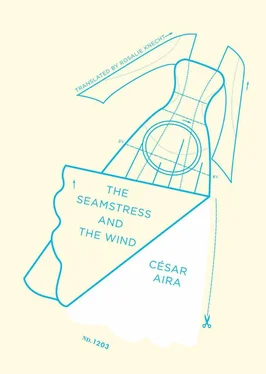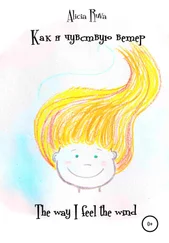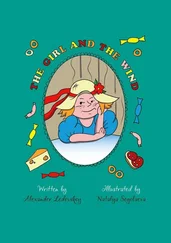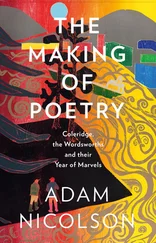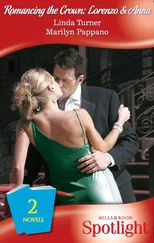He’d been working for hours, and was covered in sweat. He crawled in again and stretched out on the membrane, as if on a prehistoric white rug, to rest and think. An idea occurred to him; it seemed crazy, but maybe it wasn’t. If he took this fossil as a chassis. . and put the Chrysler engine in it, and attached the wheels. . He was drowsy with mechanical dreams. But how would he get the engine and the other parts he needed here? He wouldn’t have to bring them, he could take the shell to where they were. . He got out to try. Indeed, he could move it, but very slowly, with much difficulty, and it would take days to make the one or two miles that separated him from the car. It was a little like gambling: sometimes you have everything you need for a winning hand, but not all together. . Another idea occurred to him (which isn’t so impressive: in general when an idea occurs to a person, another one occurs to him afterwards, so much so that I’ve come to wonder sometimes if ideas don’t come to me only to provoke the occurrence of other ideas). He walked off in the direction of the Chrysler. He would have to find it again, of course, but he was confident that he could, and he did. What he’d thought of was to take the rims off the wheels, get the axles out, and make a kind of wheelbarrow to carry the engine to the shell. But it turned out that it wasn’t so easy. The lack of tools didn’t help, although he found a providential screwdriver in the taxi’s crushed glove compartment. In the end he got the four wheels off (the circle had not been deformed on any of the four); to make the kind of wheelbarrow he’d thought of was crazy. It would be more practical to work backwards. He made four trips to the excavation site, carrying one wheel each time, another trip to bring the axles, and with the help of the obliging screwdriver he managed to attach them, precariously, to the underside of the armadillo. He pushed it, and it moved forward with perfect ease. He put the tail inside, in case it might be useful; he thought he might have to put it back in its place to act as a rudder, its natural function.
It didn’t take long to pull it off. First he took the whole wreck apart, screw by screw. He jury-rigged it brilliantly; he put the engine in front, held it in with clamps, and put in the gas tank, the radiator, et cetera. The pulleys, the axles, the wheels in the four openings for the legs. . all set. It’s easier to explain it than to do it, but in his case it was very easy nonetheless. The next step was to turn it on and try it out, which he did. The machine moved, slowly at first, and then faster.
NIGHT FELL AND he drove on and on, with the horn in front. . because he’d put the armadillo’s tail-cone on as the nose of his vehicle, that is to say he’d screwed it to the opening in front. It looked good, he thought; he’d done it only for aesthetics, not aerodynamics. What he liked most was that it entirely changed the appearance of the remains: with the horn in front it didn’t look like an armadillo anymore. It made him think how easy it was to change the appearance of a thing, what seemed most inherent to its being, most eternal. . it was completely transformed by a measure as simple as changing the placement of the tail. How many things that seem different from each other, he thought, might actually be the same, with some little detail turned around!
What was impressive was the noise it made. The hoarseness of the engine resounded in the great hollow oval like thunder.
He hadn’t slept the night before, and he was nodding off. So he parked (it made no difference where) and lay down on the membrane, behind the seat. He had more than enough room. He fell asleep immediately. Close to dawn, an abrupt shaking woke him. The circle of the setting moon had come to rest just inside the tail opening, which was the only entrance or exit from the vehicle. He barely managed to wonder if he’d been dreaming before a second shake, this one more prolonged, rocked him again. It kept going while he got to his feet, stiff and still half asleep. The shell was rocking back and forth so much that Ramón fell three times before he could get hold of the back of the seat. Once he was sitting down, he looked out through the half-moon he’d left open in the upper part of the hole in front, over the steering wheel, which made a windshield without glass. The plateau was dim and tranquil, and the grass wasn’t moving. The vehicle kept vibrating, a little less now, and as soon as he could orient his attention he realized that the blows and scrapes were coming from above, from the cupola of the marvelous mother-of-pearl shell. Evidently some animal had climbed onto it; it wouldn’t have to be very big to shake the structure like that, being so light, but it might be dangerous anyway. He decided to check with the Chrysler’s rearview mirror, which he’d taken the precaution of bringing along. He grabbed it and stuck his hand out through the half-moon, pointing it backwards. What he saw froze his blood with fear.
It was the Monster. Ramón had never seen anything so ugly, but then, nobody else had ever seen anything so ugly either. It was a child monster. Perched on the roof. . the way Omar always perched on Chiquito’s truck. . children liked to do that.
The chilling thing was the Monster’s shape. . More than a shape it was an accumulation of shapes, fluid and fixed at once, fluid in space and fixed in time, and vice versa. . There was no explanation for it. The monster had seen (because it had eyes, or one eye, or it was an eye) the mirror coming out of the slot, shining in the light of the moon, and he stretched toward it. .
Ramón pulled his hand, which had begun to tremble, back inside, put in the clutch, stepped on the accelerator. . The vehicle surged forward, with the monster tumbling around on top.
Omar. . the game. . the monster child. . the lost child. . It all tumbled in his mind, like the creature on the roof of the Paleomobile. . He saw Omar duplicated in his inseparable friend César Aira. . He trusted that the Airas had taken Omar in and fed him that night and the night before; in the end, it didn’t matter. . But how paradoxical, in the middle of all this, for the lost child to be at home, and the parents circling and circling in the desert hundreds of miles away. . That didn’t make him any less a “lost child,” as in the story about the bears: he entered an empty house, he wondered who lived there, with a feeling of imminence. . at any moment the owners might interrupt him. . It didn’t matter that it was his house, that he’d lived there all his life; this was a detail that had no decisive weight to the overall meaning of the story. .
We were a pair of healthy, normal children, nice enough to look at, good students. . We adored our mothers and venerated our fathers, and feared them a little as well; they were so strict, such perfectionists. . I believe we were the quintessence of petit bourgeois normalcy. And even so, though we didn’t realize it, it all rested on fear, the way the rock floats on the crest of the lava at the end of Journey to the Center of the Earth ; fear — it might be said, the lava — was the biology, the plasma. To simplify by putting things in successive order, first came the fear the pregnant women felt (that is, it was beginning before we began ourselves), fear of giving birth to a monster. Reality, aristocratic and indifferent, followed its course. Then the fear was transformed. . It’s all a question of the transformation of fears: this makes society volatile, changeable, worlds change, the distinct successive worlds that, added together, are life. One of the avatars of fear is: that the child is lost, that he disappears. . Sometimes the fear is transferred from the mother to the father; sometimes it is not; the child registers these oscillations and is transformed in turn. That it might be the parents who disappear, that the wind might fall in love with the mother, that a monster might pursue them, that a truck driver might never lose his way because he carried his house with him like Raymond Roussel, etc. etc. etc., all that, and much more still to be seen, is part of literature.
Читать дальше
